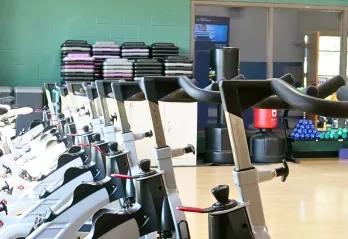Debunking the Myth: Does Cardio Increase Belly Fat in Perimenopausal and Postmenopausal Women?

One of the most common misconceptions in the fitness world is that cardio, especially steady-state, causes fat gain—particularly in perimenopausal and postmenopausal women. This idea has been circulating widely, leaving many confused about what types of exercise are best during this stage of life.
The Truth: Cardio Is Not the Enemy
There is no solid evidence to suggest that moderate or prolonged cardio leads to fat gain, especially around the belly. In fact, research supports the opposite: cardio can help reduce visceral fat (the deeper abdominal fat linked to health risks).
According to studies, aerobic exercise plays a key role in maintaining a healthy body composition and reducing central fat accumulation. The confusion likely comes from well-intentioned but misinformed advice that warns against excessive cardio without considering the full picture.
Why the Confusion? Misinformation and Conflicting Messages
With so much fitness advice on social media, it’s easy to see why people are unsure about the role of cardio. Some professionals argue that excessive endurance training without strength work can lead to muscle loss, which may impact metabolism. While there’s truth to that, it doesn’t mean cardio alone causes fat gain.
For perimenopausal and postmenopausal women, the body undergoes hormonal shifts that can influence fat storage patterns. However, blaming cardio alone ignores key factors like diet, resistance training, total exercise volume, and recovery.
What Should Perimenopausal and Postmenopausal Women Focus On?
- Incorporate Strength Training – Resistance training helps preserve muscle mass, which is essential for metabolism and overall body composition.
- Include HIIT or Sprint Interval Training (SIT) – These workouts improve metabolic flexibility, increase muscle power, and support recovery.
- Don’t Fear Cardio – Steady-state cardio can be beneficial for heart health, endurance, and fat metabolism. If you enjoy it, there’s no need to eliminate it from your routine.
- Adjust Total Training Volume for Recovery – During hormonal transitions, recovery becomes even more important. If you’re feeling overly fatigued, adjusting intensity, volume, or adding rest days can help.
Final Thoughts: A Balanced Approach Is Key
Rather than avoiding cardio out of fear, a well-rounded approach that includes strength training, higher-intensity intervals, and manageable aerobic work is ideal. The key is listening to your body, balancing recovery, and not getting caught up in misleading fitness myths.
Author
